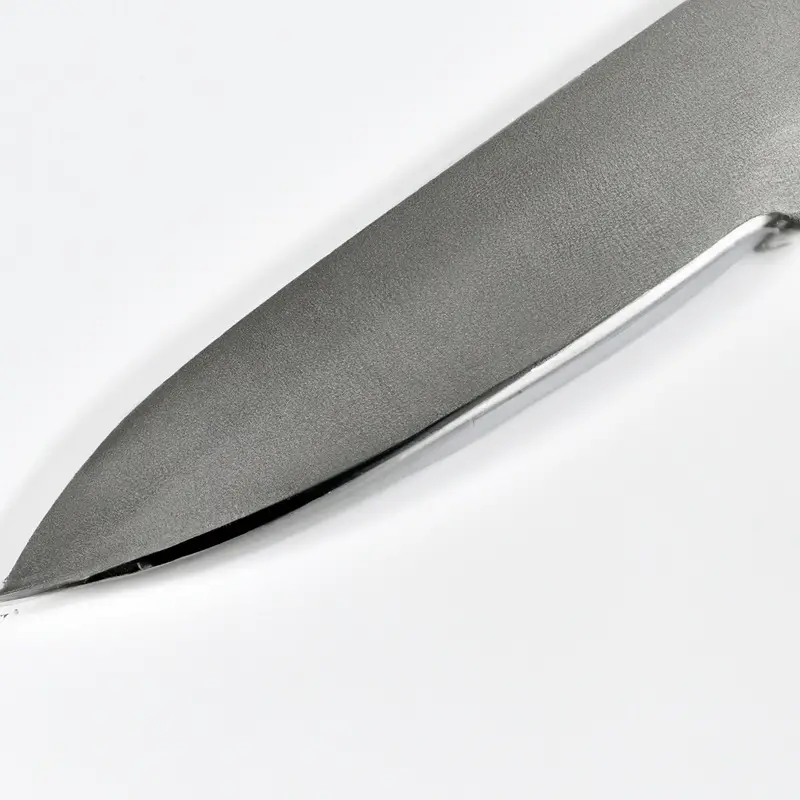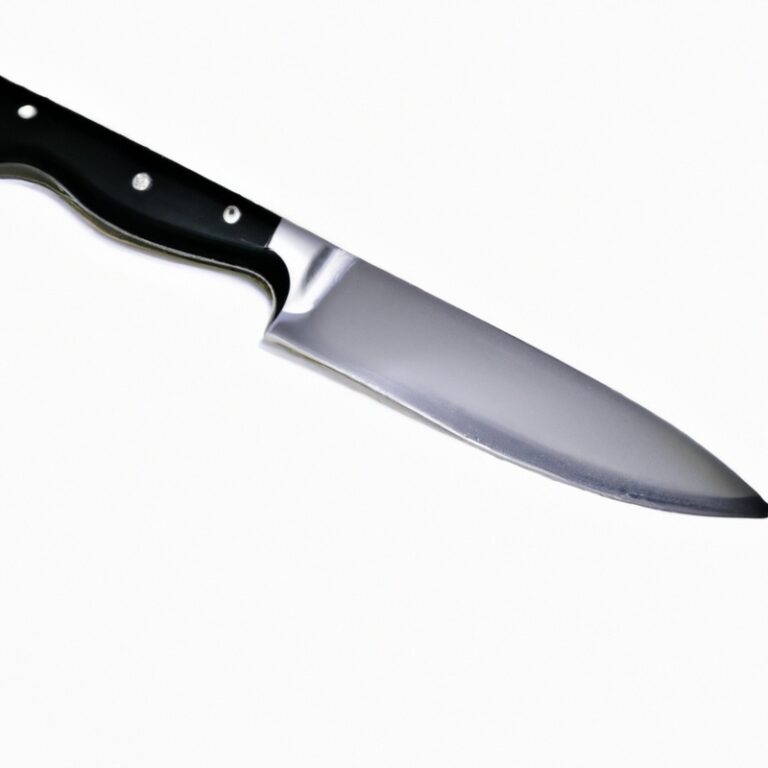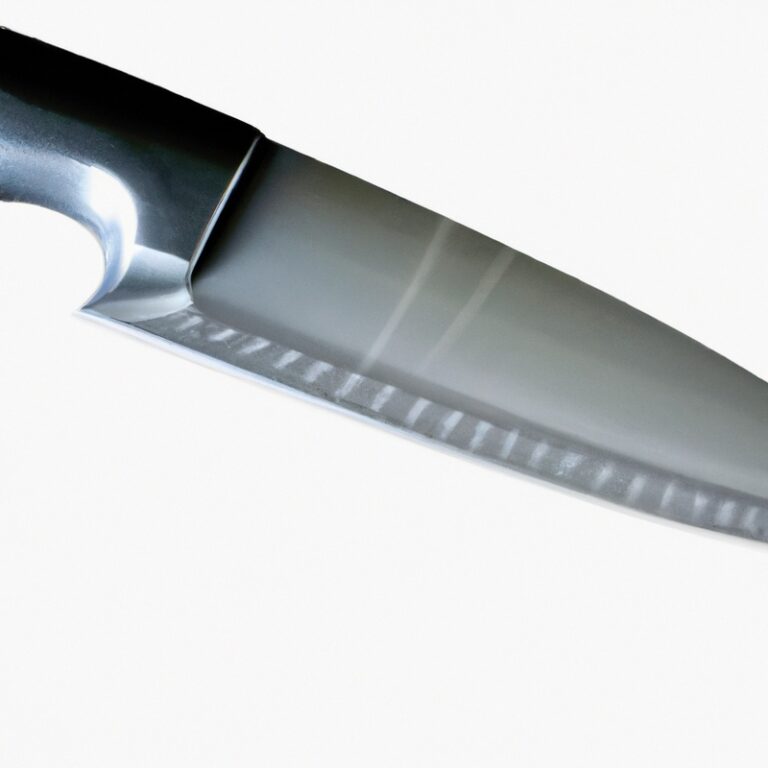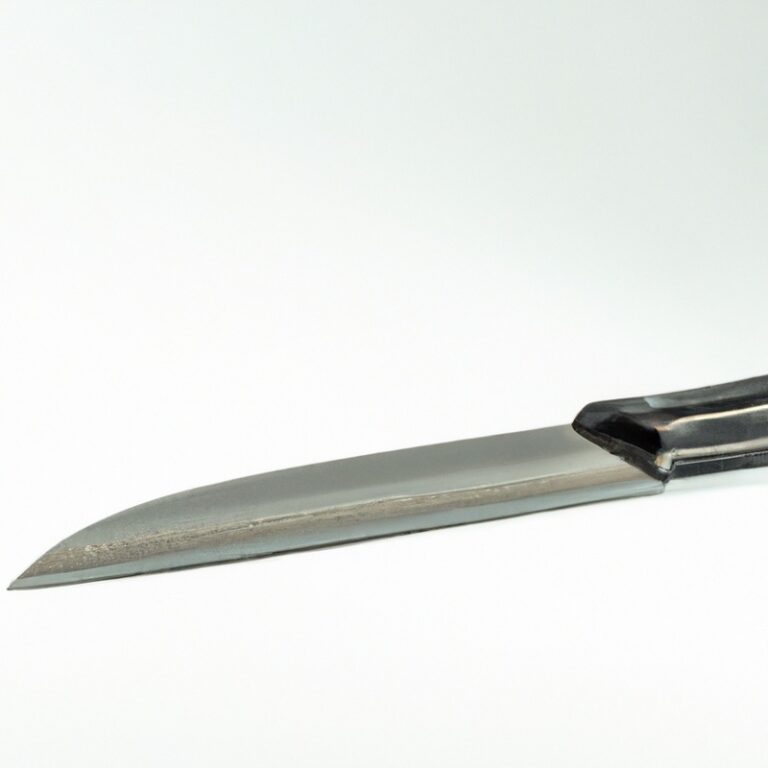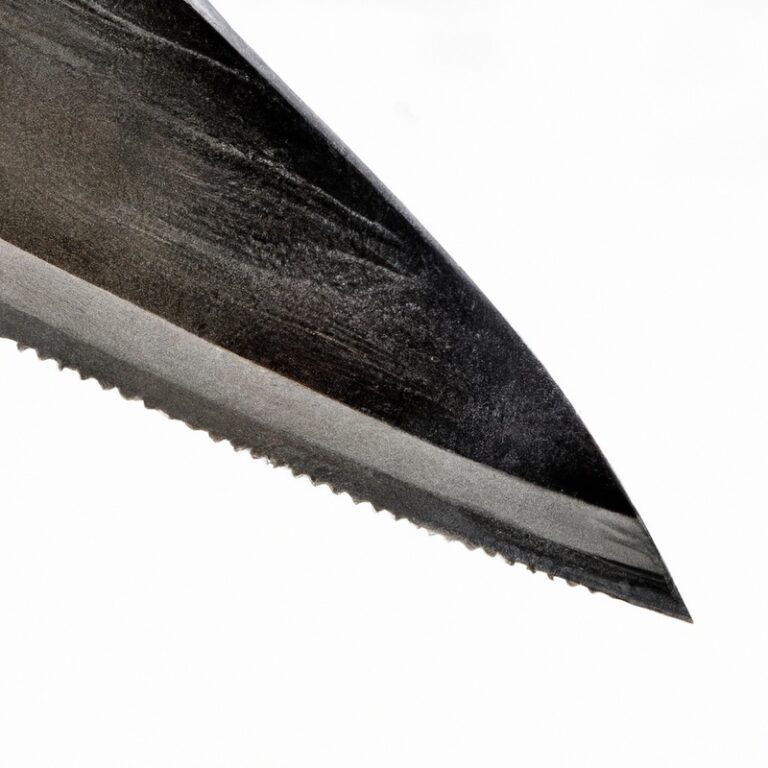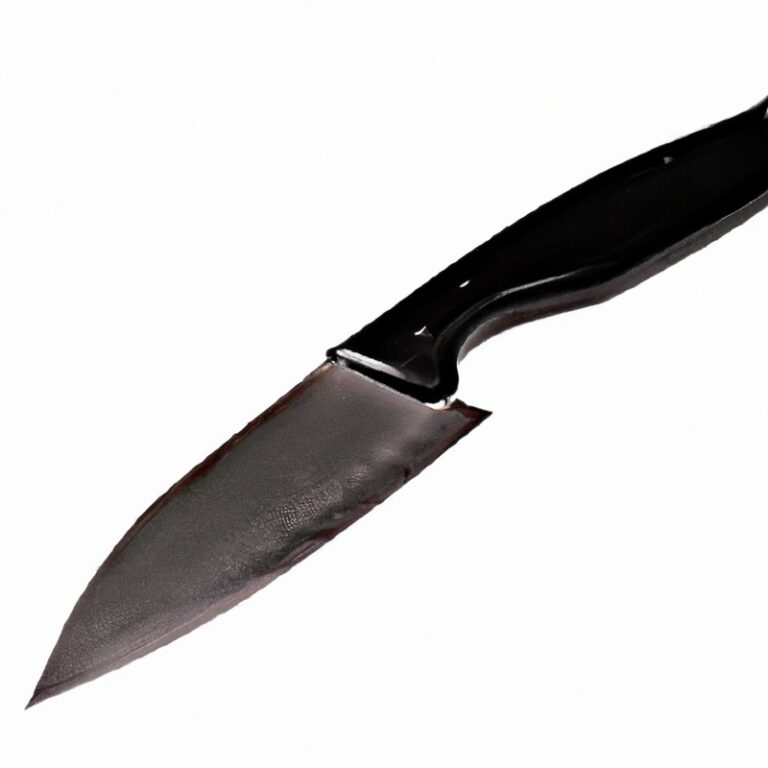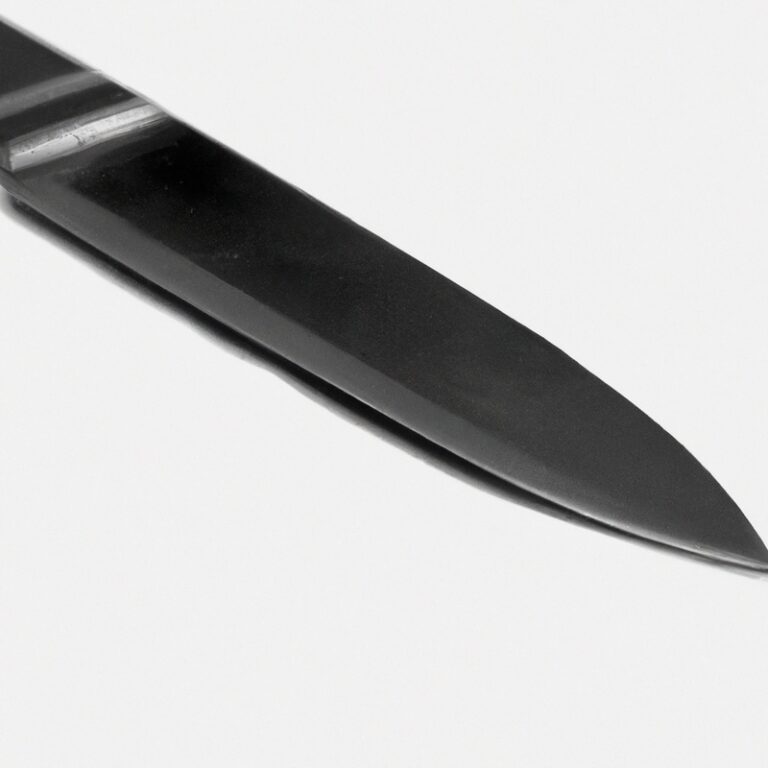How Do Serrated Knives Differ From Straight-Edged Knives In Terms Of Cutting Performance?
Key Takeaways:
- Serrated knives excel at cutting through tough and fibrous foods such as bread and tomatoes.
- Straight-edged knives provide more precision and control for tasks like slicing and dicing.
- Serrated knives are less prone to dulling compared to straight-edged knives.
- The choice between serrated and straight-edged knives depends on the specific cutting needs and preferences of the user.
Have you ever wondered why some knives have teeth while others are smooth? The answer lies in their cutting performance and the tasks they’re best suited for.
In this article, I’ll delve into the fascinating world of knives and explore the differences between serrated knives and straight-edged knives.
From their design and structure to how they cut different foods, we’ll uncover the unique characteristics that make these knives stand out. Whether you’re a culinary enthusiast or just curious about knives, you won’t want to miss this exploration of cutting performance.
Get ready to slice and dice like a pro!
| Serrated Knives | Straight-Edged Knives |
|---|---|
| Have a serrated or saw-like edge | Have a smooth and straight edge |
| Can easily cut through hard or tough-skinned foods, like crusty bread or tomatoes | Are versatile and suitable for most cutting tasks |
| Less likely to slip on the food’s surface | Require a bit more control and pressure to ensure a clean cut |
| Stay sharp for longer periods without frequent sharpening | Require more frequent sharpening to maintain optimal performance |
| May leave behind small, jagged edges on some foods | Ensure cleaner and precise cuts |
| Best for slicing through foods with delicate interiors, like cakes or pastries | Ideal for tasks that require fine dicing or chopping, like vegetables or herbs |
What are serrated knives?
Definition of serrated knives
Serrated knives are a type of kitchen knife with a distinctive blade design. Unlike straight-edged knives, serrated knives have a saw-like edge with small, pointed teeth along the cutting edge.
These teeth, or serrations, provide a more efficient cutting action by gripping and tearing into the food instead of sliding through it like a straight edge.
Serrated knives are particularly effective at cutting through tough or crusty foods, such as bread or tomatoes, where a straight-edged knife might struggle. The serrations help to grip the food’s surface, allowing for a smoother and cleaner cut.
Types of serrated knives
There are several types of serrated knives that you can choose from based on your cutting needs. Here are some of the most common types:
- Bread Knife: This knife has a long, serrated blade specifically designed for cutting through bread without squishing it.
- Tomato Knife: With a small, serrated blade, this knife is perfect for smoothly slicing through the tough skin of tomatoes without damaging the delicate flesh.
- Meat Knife: These knives typically have a longer, slightly curved blade with deeper serrations, allowing for easy cutting through tough cuts of meat.
- Utility Knife: This versatile knife usually has a shorter blade and is great for a variety of tasks, including slicing sandwiches, carving fruits, and trimming vegetables.
- Steak Knife: Designed with a serrated blade, steak knives are perfect for cutting through thick pieces of meat, ensuring you have a smooth and effortless dining experience.
Each type of serrated knife is designed to excel at a specific task, making them an essential tool in the kitchen. Whether you’re enjoying a delicious loaf of bread or preparing a mouthwatering steak, having the right serrated knife will make all the difference in your cutting experience.
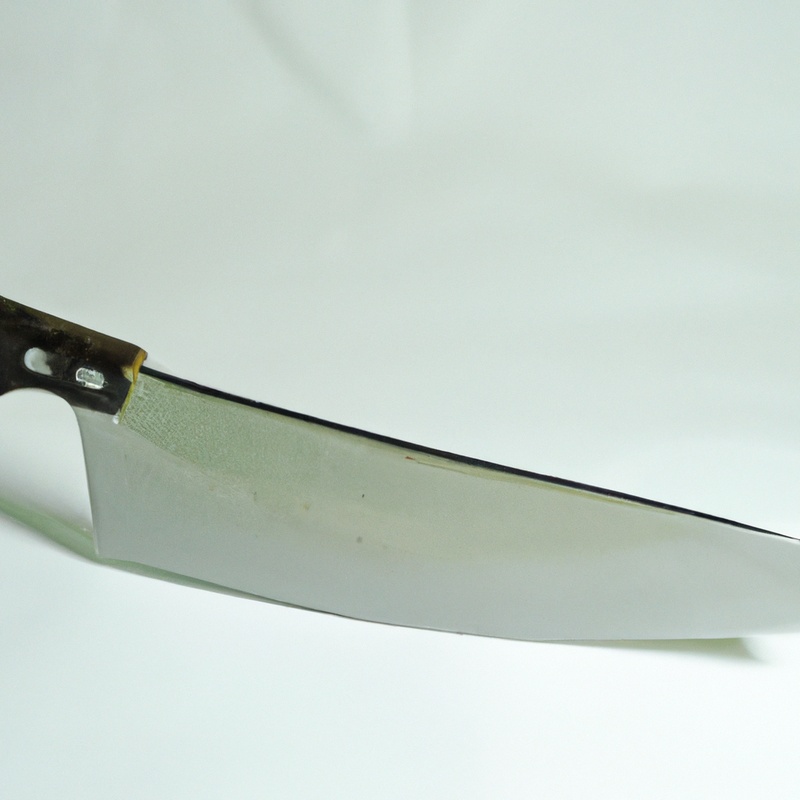
What are straight-edged knives?
Definition of straight-edged knives
Straight-edged knives, also known as plain-edged knives, have blades that are smooth and without any serrations. These knives have a sharp, straight edge that runs along the entire length of the blade.
This design allows for precise and clean cuts, making them ideal for tasks that require accuracy and control.
Straight-edged knives are commonly used for slicing fruits, vegetables, and boneless meats. They are versatile and can be used for a variety of cutting techniques, such as chopping, dicing, and mincing.
While straight-edged knives excel at making precise cuts, they may struggle with certain tasks that require the blade to grip and tear through tough surfaces, such as crusty bread or thick-skinned fruits.
In such cases, serrated knives may be more effective. Overall, straight-edged knives are a staple in most kitchens due to their versatility and ability to handle a wide range of cutting tasks.
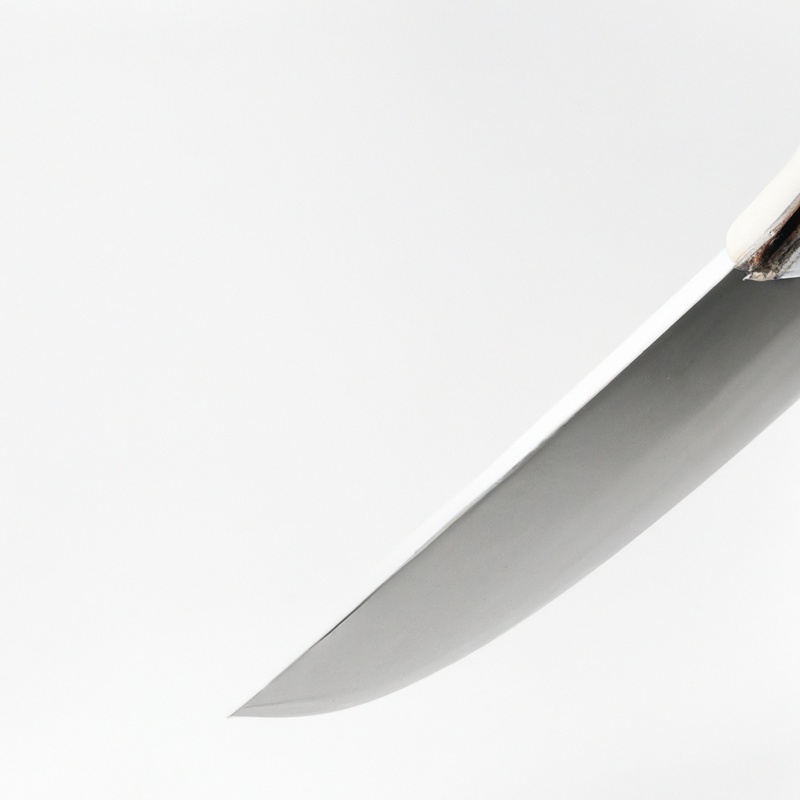
Types of straight-edged knives
There are various types of straight-edged knives that serve different purposes in the kitchen. Here are some common ones:
- Chef’s Knife: This versatile knife has a broad, tapered blade and is ideal for chopping, slicing, and dicing fruits, vegetables, and meats.
- Paring Knife: A small knife with a pointed tip, perfect for precision tasks such as peeling, trimming, and intricate slicing.
- Santoku Knife: Originating from Japan, this knife has a shorter, wider blade and is excellent for slicing, dicing, and mincing.
- Utility Knife: This all-purpose knife is smaller than a chef’s knife and can handle a variety of cutting tasks, such as slicing sandwiches, fruits, and small vegetables.
- Carving Knife: With its long, thin blade, this knife is designed for slicing through large cuts of meat, such as roasts and poultry.
- Boning Knife: A narrow, flexible blade makes this knife perfect for removing bones from meat, poultry, and fish.
- Bread Knife: Featuring a long, serrated blade, this knife is specifically designed for slicing through crusty bread without squishing it.
Each of these straight-edged knives has its own unique design and purpose, making them essential tools for any home cook or professional chef. With the right knife for the job, you can enhance your cutting precision and efficiency in the kitchen.
Differences in design and structure
Serrated knives’ blade design
Serrated knives have a unique blade design that sets them apart from straight-edged knives. The blade of a serrated knife features small, saw-like teeth along the edge, which help with cutting through tough or crusty foods.
These teeth create multiple points of contact with the food, allowing for more efficient slicing and reducing the need for a back and forth sawing motion.
Serrated knives are especially effective for slicing bread, tomatoes, and other delicate foods without crushing them. The design of the serrated blade also helps maintain sharpness for longer periods of time, as the teeth distribute the cutting force more evenly.
So, if you’re looking for a knife that excels at slicing through tough textures and maintaining its sharpness, a serrated knife is a great choice.
Straight-edged knives’ blade design
Straight-edged knives have a blade design that is characterized by a smooth, sharp edge from the tip of the blade to the base. Unlike serrated knives, they do not have teeth or ridges on the blade.
The blade is typically flat, allowing for precise and clean cuts.
This design makes straight-edged knives versatile and suitable for a wide range of cutting tasks. With their sharp edge, they excel in slicing, dicing, and chopping vegetables, fruits, and meats.
They are also ideal for tasks that require precision, such as peeling and trimming.
The absence of teeth on the blade makes them easier to sharpen and maintain compared to serrated knives. Straight-edged knives are a staple in any kitchen and are a must-have tool for any home cook or professional chef.
Cutting performance of serrated knives
How serrated knives cut different foods
Serrated knives are designed with a unique blade edge that consists of small, jagged teeth. These teeth allow them to cut through tough and crusty foods with ease.
When it comes to cutting different foods, serrated knives excel in a few key areas.
One of the main benefits of a serrated knife is its ability to cut through bread without squishing or tearing it. The teeth of the knife grip the crust, allowing for a clean cut through the soft interior.
This is why serrated knives are often referred to as bread knives.
Serrated knives are also great for slicing through tomatoes and other delicate fruits or vegetables. The teeth grip the skin of the tomato, ensuring a clean and precise cut without crushing the juicy flesh inside.
Additionally, serrated knives can tackle tougher items, such as pineapple or melon, thanks to their saw-like edge.
The teeth easily bite into the tough outer layer, making it easier to separate the fruit from the rind. Overall, the serrated edge of these knives provides excellent cutting performance for foods with hard exteriors and soft interiors.
Whether you’re slicing through bread, tomatoes, or tough-skinned fruits, a serrated knife is a handy tool to have in the kitchen.
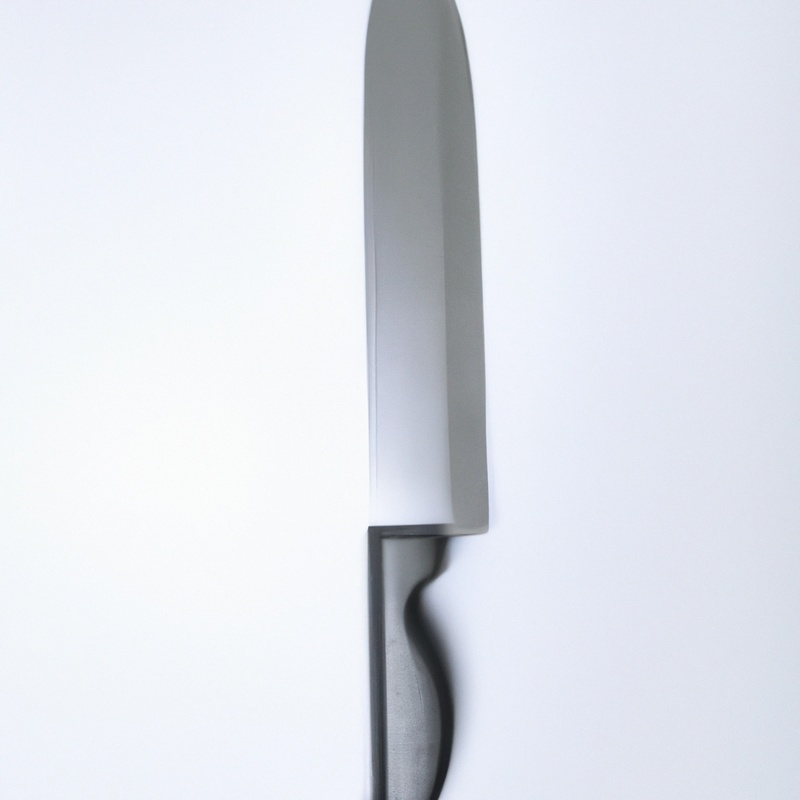
Benefits of using serrated knives for specific tasks
Serrated knives offer several benefits for specific tasks. First, they excel at cutting through tough, crusty bread without crushing it, leaving you with clean slices.
Second, the serrations prevent soft items like tomatoes from getting squished, allowing for precise cuts.
Third, the saw-like teeth of serrated knives make them ideal for slicing through foods with a hard exterior and a soft interior, like melons and pineapples. Lastly, the jagged edges of serrated knives provide better grip and control when cutting through slippery items such as fish or roast meats.
So, whether you’re preparing a sandwich or slicing up a watermelon, a serrated knife can make the task much easier and more efficient.
Cutting performance of straight-edged knives
How straight-edged knives cut different foods
Straight-edged knives are a versatile tool in the kitchen, capable of cutting a wide range of foods efficiently. With their sharp and smooth blades, they excel at making precise cuts through fruits, vegetables, and meats.
When cutting fruits, straight-edged knives can easily slice through soft and delicate textures.
Their sharp blades allow for clean cuts without crushing or bruising the fruit. For example, when slicing tomatoes, the straight edge ensures smooth and even slices, preserving the fruit’s juiciness and appearance.
Similarly, when it comes to vegetables, straight-edged knives are ideal for tasks such as dicing, chopping, and mincing.
Their sharpness enables swift and accurate cuts, giving you control over the size and shape of the vegetable pieces. Whether you’re preparing onions, carrots, or bell peppers, a straight-edged knife can make the job quick and effortless.
Straight-edged knives are also great for cutting through different types of meats.
Their sharp blades allow for precise cuts when trimming fat or portioning meat. Whether you’re preparing a juicy steak or slicing roast beef, a straight-edged knife ensures clean and uniform slices for a professional presentation.
Benefits of using straight-edged knives for specific tasks
When it comes to specific tasks in the kitchen, using straight-edged knives can have some clear benefits. Here are a few advantages of using straight-edged knives for specific tasks:
- Precision cutting: Straight-edged knives provide a clean and precise cut, making them ideal for tasks that require accuracy, such as slicing vegetables or trimming meat. The sharp, straight edge allows you to control the depth and angle of the cut, resulting in more consistent and even slices.
- Versatility: Straight-edged knives are versatile tools that can handle a wide range of cutting tasks. Whether you need to dice, chop, or mince ingredients, a straight-edged knife can handle it with ease. Its sharp edge and maneuverability make it a go-to choice for many kitchen tasks.
- Effortless slicing: With a straight-edged knife, you can slice through ingredients effortlessly. The sharp edge reduces resistance, allowing you to glide through fruits, bread, or cooked meat without much effort. This can make your food prep more efficient and enjoyable.
- Easy sharpening: Maintaining a sharp edge is crucial for any knife. Straight-edged knives are generally easier to sharpen compared to serrated knives. You can use a sharpening stone or a honing steel to maintain the edge, ensuring that your knife remains in optimal cutting condition.
- Clean cuts: Straight-edged knives tend to create clean and smooth cuts, minimizing the damage to the food’s structure. This is especially beneficial when working with delicate ingredients like herbs or tender fruits, as it helps to preserve their texture and appearance.
By using straight-edged knives for specific tasks, you can enjoy the benefits of precision cutting, versatility, effortless slicing, easy sharpening, and clean cuts. These advantages can enhance your cooking experience and improve the quality of your dishes.
Which knife is better for different cutting tasks?
Best uses for serrated knives
Serrated knives are great for certain tasks that require cutting through tough or crusty surfaces. Here are the best uses for serrated knives:
- Bread: Serrated knives are perfect for slicing through bread without crushing or squishing it. The sharp teeth grip the crust, allowing for smooth and neat cuts.
- Tomatoes: Serrated knives excel at cutting through the delicate skin of tomatoes without causing them to become mushy. The saw-like motion helps maintain the shape and texture of the fruit.
- Citrus Fruits: Serrated knives are ideal for cutting through the thick, tough peels of citrus fruits like oranges and grapefruits. The teeth easily penetrate the skin, making it easier to remove the peel.
- Cake: Serrated knives are excellent for slicing cake layers, especially when they have a tender crumb or delicate frosting. The serrations prevent the cake from crumbling and ensure clean, even cuts.
- Delicate Proteins: Serrated knives are useful when cutting delicate proteins like smoked salmon or thinly-sliced meats. The teeth grip the surface, allowing for precise cuts without tearing or shredding.
- Soft Vegetables: Serrated knives work well with soft vegetables like eggplants or ripe bell peppers. The serrations help glide through their soft flesh without causing excessive pressure or damage.
So, the next time you’re faced with any of these tasks in the kitchen, reach for your serrated knife to achieve clean and effortless cuts. Happy cooking!
Best uses for straight-edged knives
Straight-edged knives are extremely versatile and can be used for a variety of cutting tasks. Here are some of the best uses for straight-edged knives:
- Slicing: Straight-edged knives are ideal for slicing tasks, such as cutting through fruits, vegetables, or meats. Their sharp, smooth blades allow for clean and precise cuts, making them perfect for creating thin slices of food.
- Chopping: Straight-edged knives are also great for chopping ingredients like herbs, garlic, or onions. Their sturdy blades and sharp edges make it easy to chop through dense or tough foods.
- Dicing: If you need to dice ingredients into small, uniform pieces, a straight-edged knife is your go-to. Their straight blades allow for precise cuts, ensuring that your ingredients are evenly diced.
- Carving: Straight-edged knives are the tool of choice for carving meats, such as roasted chicken or turkey. Their sharp blades and control make it easier to carve through the meat and create neat slices.
- Peeling and Trimming: When it comes to peeling fruits and vegetables or trimming excess fat from meats, straight-edged knives are perfect. Their sharp tips and smooth blades allow for detailed and precise work.
Remember, straight-edged knives are versatile and can handle a wide range of cutting tasks. So, whether you’re slicing, chopping, dicing, carving, or peeling, a straight-edged knife will get the job done efficiently and effectively.
Maintenance and sharpening
How to maintain and clean serrated knives
To maintain and clean serrated knives, there are a few important steps you should follow. First, always hand wash your serrated knife with warm soapy water immediately after use.
Avoid putting it in the dishwasher, as the high heat and harsh detergents can damage the blade.
To clean the serrations, use a soft-bristled brush or toothbrush to gently scrub along the edge of the blade. This will help remove any food particles or residue that may be stuck in the serrations.
Be careful not to scrub too hard, as this can cause the bristles to bend or break.
After washing and cleaning, make sure to thoroughly dry the knife with a clean towel to prevent any moisture from causing rust or corrosion. You can also use a hairdryer on a low setting to ensure all the water is completely evaporated.
To maintain the sharpness of the serrated knife, it’s best to use a honing rod specifically designed for serrated blades.
Simply run the honing rod along the edge of the serrations, applying gentle pressure. This will help realign the teeth and keep them sharp.
If your serrated knife becomes dull and needs sharpening, it’s best to take it to a professional knife sharpener who has experience with serrated blades.
Attempting to sharpen a serrated knife at home can be challenging and may lead to further damage.
How to maintain and sharpen straight-edged knives
Maintaining and sharpening straight-edged knives is essential to keep them in optimal condition. To maintain a straight-edged knife, it’s important to wash it by hand with warm soapy water and dry it immediately to prevent rust.
Avoid using abrasive cleaners or scrubbers that can damage the blade.
Sharpening straight-edged knives can be done using a knife sharpener or a whetstone. If using a knife sharpener, follow the manufacturer’s instructions to ensure proper sharpening.
For sharpening with a whetstone, wet the stone and hold the knife at a 20-degree angle, then move the blade back and forth along the stone, maintaining a consistent angle.
Repeat the process to sharpen the other side of the blade. Regular maintenance and sharpening will not only prolong the lifespan of your straight-edged knife but also ensure its cutting performance and safety.
Keep in mind that a sharp knife is safer to use as it requires less force, reducing the risk of accidental slips.
By taking care of your straight-edged knife, you can enjoy its efficiency and precision in the kitchen for years to come.
Final Verdict
The key difference between serrated knives and straight-edged knives lies in their cutting performance. Serrated knives excel at cutting through tough and crusty surfaces with ease, making them perfect for tasks like slicing bread or tomatoes.
On the other hand, straight-edged knives are ideal for precision cutting and performing intricate tasks like chopping herbs or filleting fish.
Each type of knife has its own unique strengths and best uses, so it’s important to choose the right knife for the specific cutting task at hand. Additionally, proper maintenance and sharpening techniques are essential to ensure longevity and optimal performance for both types of knives.
By understanding these differences and caring for your knives properly, you can enhance your culinary experience and achieve excellent results in the kitchen.

